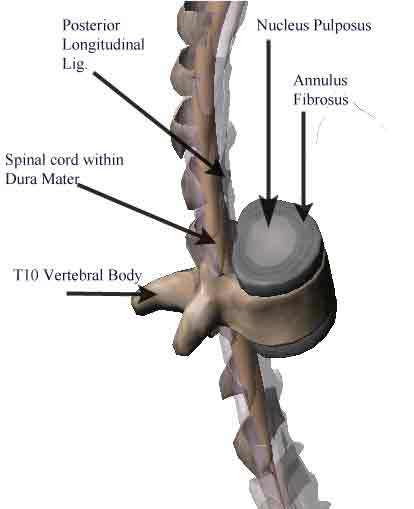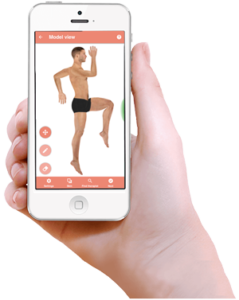Lumbar Disc Herniation & Thai Massage

When practicing Thai massage most students have been taught the standard contra-indications. Some follow them and some forget them. The one contra-indication that people do remember is that of Slip Disc. Students are taught not to put the client in any position of forward bending or twists that might complicate the issue. The consequences of giving a Thai massage without awareness to a client who has had previous condition of a herniated disc can result in paralysis to temporary immobility to mild pain. It is an eventuality you do not want to have with any client.
Slip disc or technically known as Disc Herniation occurs when the gel-like fluid (Nucleus Pulposus) within the Inter-vertebral disc starts leaking out of its outer fibro-cartilaginous ring ( called the Annulus Fibrosus).
Here is a great video 3 D video on Disc Herniation that can give you a pretty good idea about how it happens.
Having understood the Anatomy of Disc Herniation how can we as practitioners work on clients without endangering them on this count. What makes the task more difficult is the fact that many times clients themselves are unaware of a dormant or developing condition. This is one of the most dangerous situations possible because when neither you nor the client have any idea that some Thai massage moves could create serious complications. Therefore here are some steps to ensure that you can avoid such an eventuality (at least as far as Lumbar Disc herniation goes):-
- Use a good consultation form which can give you a heads-up for the potential problem area.
- Observe the posture of your client, a flat back and stooped posture has a higher likelihood towards Lumbar disc herniation.
- Tight hamstrings, tight abdominals may be revealed by palpation.
- Finally, you can use the Straight Leg Raise test (video below) to diagnose latent patterns towards Lumbar disc herniation.
Here are the steps to conduct an SLR test
- Have the client lie down on their back
- Hold one leg at the ankle and raise it up to 60 degrees to horizontal. Observe or ask your client if they feel pain in the hip or the back.
- Dorsiflex the foot gently and check for pain again
- Do not raise the leg or dorsiflex the foot beyond the point where the client reports pain.
- Gently release the foot and let go.
- The Straight Leg Raise test works by pulling the sciatic nerve at its origin in the lumbosacral junction. If there is nerve root impingement then stretching the nerve (by raising the leg) will cause immediate pain in your client.
See below a video on how to do the SLR Test.
If the client reports pain, then there is a high probability of Lumbar Disc Herniation.
You can help people suffering from slip disc provided you work with absolute awareness and no gimmicks. Most importantly they need work on their Thai SEN Lines in the leg particularly the hamstrings, front of the calf and soles of the feet (the back lines also would be good starting point) and realignment of their hip.
Avoid gimmicky passive stretches and twists. From there you can proceed towards loosening the Abdominal area and opening the chest. Finally, exercise caution and patience and keep checking with your client for signs of pain and discomfort. When working on complex cases, you may find this article useful for putting you in a relaxed frame of mind.


